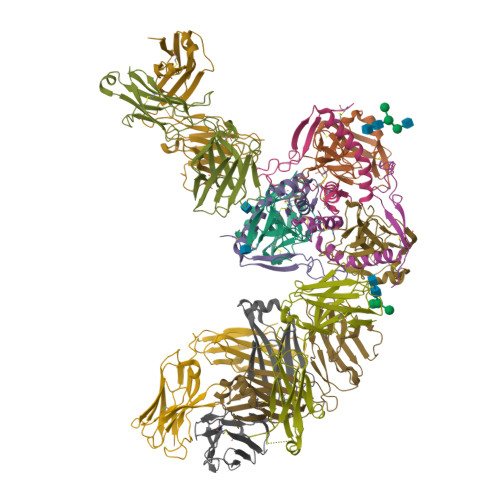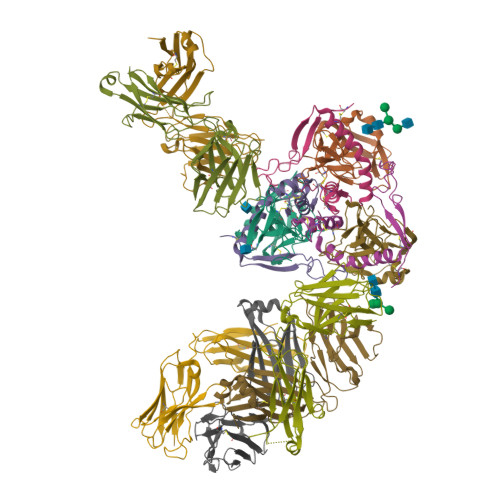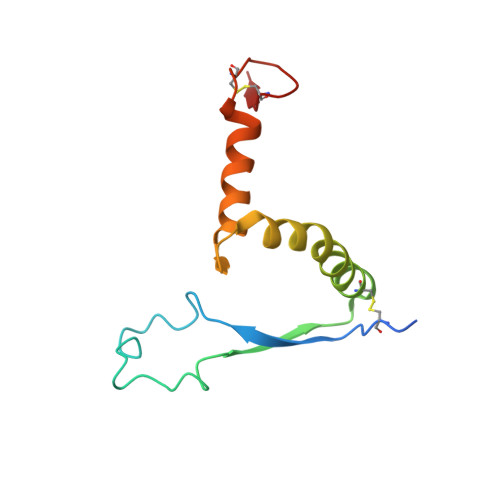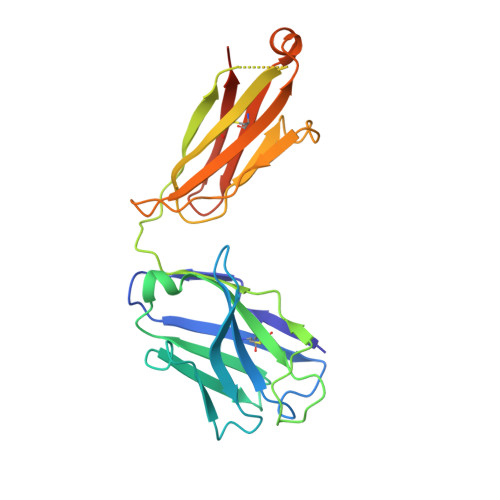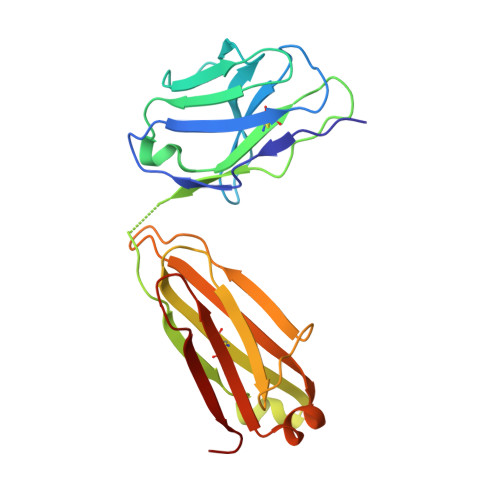Structural Basis of Pan-Ebolavirus Neutralization by a Human Antibody against a Conserved, yet Cryptic Epitope.
West, B.R., Moyer, C.L., King, L.B., Fusco, M.L., Milligan, J.C., Hui, S., Saphire, E.O.(2018) mBio 9
- PubMed: 30206174
- DOI: https://doi.org/10.1128/mBio.01674-18
- Primary Citation of Related Structures:
6EA5, 6EA7 - PubMed Abstract:
Only one naturally occurring human antibody has been described thus far that is capable of potently neutralizing all five ebolaviruses. Here we present two crystal structures of this rare, pan-ebolavirus neutralizing human antibody in complex with Ebola virus and Bundibugyo virus glycoproteins (GPs), respectively. The structures delineate the key protein and glycan contacts for binding that are conserved across the ebolaviruses, explain the antibody's unique broad specificity and neutralization activity, and reveal the likely mechanism behind a known escape mutation in the fusion loop region of GP2. We found that the epitope of this antibody, ADI-15878, extends along the hydrophobic paddle of the fusion loop and then dips down into a highly conserved pocket beneath the N-terminal tail of GP2, a mode of recognition unlike any other antibody elicited against Ebola virus, and likely critical for its broad activity. The fold of Bundibugyo virus glycoprotein, not previously visualized, is similar to the fold of Ebola virus GP, and ADI-15878 binds to each virus's GP with a similar strategy and angle of attack. These findings will be useful in deployment of this antibody as a broad-spectrum therapeutic and in the design of immunogens that elicit the desired broadly neutralizing immune response against all members of the ebolavirus genus and filovirus family. IMPORTANCE There are five different members of the Ebolavirus genus. Provision of vaccines and treatments able to protect against any of the five ebolaviruses is an important goal of public health. Antibodies are a desired result of vaccines and can be delivered directly as therapeutics. Most antibodies, however, are effective against only one or two, not all, of these pathogens. Only one human antibody has been thus far described to neutralize all five ebolaviruses, antibody ADI-15878. Here we describe the molecular structure of ADI-15878 bound to the relevant target proteins of Ebola virus and Bundibugyo virus. We explain how it achieves its rare breadth of activity and propose strategies to design improved vaccines capable of eliciting more antibodies like ADI-15878.
Organizational Affiliation:
Department of Immunology and Microbiology, Scripps Research, La Jolla, California, USA.








